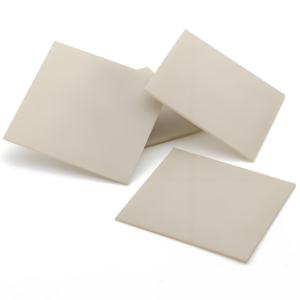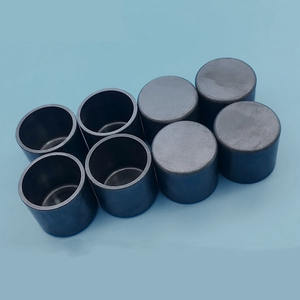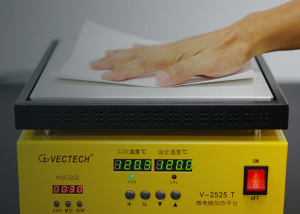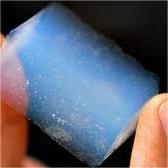Professional industry ceramic supplier, silicon nitride, silicon carbide, aluminum nitride and any other kinds of ceramics.
1. Introduction
In the past 48 hours, industrial ceramics manufacturers have reported a surge in demand for high-performance refractory materials, especially silicon carbide crucibles, driven by growth in lab-scale metal casting and renewable energy component production. As more hobbyists and professionals turn to advanced ceramics for high-temperature processes, knowing how to correctly use and maintain a silicon carbide crucible is essential to avoid costly failures.

Silicon carbide crucibles are prized for their exceptional thermal conductivity, resistance to thermal shock, and ability to withstand temperatures over 1600°C (2912°F). However, improper handling can lead to premature cracking or contamination. This guide provides clear, step-by-step instructions to help you get the most out of your crucible—whether you’re melting metals, firing ceramics, or running lab experiments.
2. Understanding Your Silicon Carbide Crucible
Before using your crucible, it’s important to recognize that not all ceramic crucibles are the same. A silicon carbide crucible differs significantly from alternatives like zirconia crucibles or alumina (Al2O3) crucibles. While zirconia offers higher purity for sensitive reactions, silicon carbide excels in thermal cycling and mechanical strength.
It’s also worth noting the distinction between silicon carbide and other advanced ceramics. For example, boron carbide vs silicon carbide: boron carbide is harder and used in armor, but less thermally conductive. Meanwhile, silicon nitride ceramic—often found in silicon nitride crucible factories—is tougher and more resistant to oxidation but typically more expensive. Your choice depends on your specific application, but for general high-temp melting, silicon carbide remains a top pick.
3. Step-by-Step: How to Use a Silicon Carbide Crucible Safely
3.1. Pre-Use Preparation
Always inspect your silicon carbide crucible for cracks, chips, or glaze defects before first use. Even hairline fractures can expand under heat and cause failure.
- Never place a cold crucible directly into a hot furnace. Always preheat gradually.
- If the crucible is new, perform a burn-in cycle: heat slowly to 600°C (1112°F) over 1–2 hours, hold for 30 minutes, then cool naturally. This removes moisture and relieves internal stresses.
3.2. Loading and Heating

Fill the crucible no more than 75% full to prevent spillage during melting. Avoid dropping solid materials into it—this can chip the interior.
Heat gradually: ramp up at 150–200°C per hour until reaching your target temperature. Rapid heating causes thermal shock, even in robust materials like silicon carbide.
Use compatible tongs—preferably ceramic-coated or made of high-temp alloys—to handle the crucible. Metal tongs can scratch or react with the surface.
3.3. Cooling and Unloading
After use, allow the crucible to cool inside the furnace or on a ceramic fiber board—not on a cold metal surface or concrete. Sudden cooling = cracks.
Never quench a hot silicon carbide crucible in water. This almost guarantees breakage.
Once cooled, gently tap out residue. Avoid metal scrapers; use wooden or ceramic tools instead.
4. Cleaning and Maintenance Tips
Residue buildup reduces efficiency and can contaminate future batches. Clean your crucible after every few uses:

- Soak in warm water with mild detergent for light deposits.
- For stubborn slag, use a diluted acid bath (e.g., 10% hydrochloric acid) for 15–30 minutes—only if compatible with your material. Rinse thoroughly afterward.
- Never use abrasive pads or sandblasting unless absolutely necessary; this wears down the protective SiC layer.
Store your crucible in a dry, dust-free environment. Moisture absorption can cause steam explosions during reheating.
5. Common Problems and Solutions
5.1. Cracking or Spalling
Cause: Thermal shock from rapid heating/cooling or mechanical impact.
Solution: Always follow gradual ramp rates. Handle with care. Replace if cracks appear—do not attempt to repair.
5.2. Contamination of Melt
Cause: Residual oxides, previous melts, or incompatible charge materials.
Solution: Dedicate crucibles to specific metals (e.g., one for aluminum, another for copper). Clean thoroughly between uses.
5.3. Reduced Lifespan
Cause: Overheating beyond rated limits or chemical attack (e.g., from strong alkalis).
Solution: Check manufacturer specs. Most standard silicon carbide crucibles are rated to 1600°C; RBSiC (reaction-bonded silicon carbide) versions may go higher. Avoid contact with fluxes containing sodium or potassium.
6. When to Choose Alternatives
While silicon carbide crucibles are versatile, some scenarios call for different materials:
- For ultra-high-purity applications (e.g., semiconductor research), consider a silicon nitride crucible from a specialized silicon nitride crucible factory.
- For extreme hardness in non-thermal roles, boron carbide might be better—but it’s brittle and poor for thermal cycling.
- Don’t confuse your crucible with other silicon carbide products like silicon carbide ceramic tiles, silicon carbide burner nozzles, or silicon carbide ceramic baking dishes—these serve entirely different purposes despite sharing the base material.
7. Conclusion
A silicon carbide crucible is a powerful tool for high-temperature work—but only if treated with respect. By following proper preheating, handling, cooling, and cleaning protocols, you can extend its life significantly and ensure consistent, safe results. Whether you’re in a lab, foundry, or studio, understanding the nuances of this advanced ceramic will save time, money, and frustration. Remember: patience with temperature changes is the golden rule.
Our Website founded on October 17, 2012, is a high-tech enterprise committed to the research and development, production, processing, sales and technical services of ceramic relative materials such as How. Our products includes but not limited to Boron Carbide Ceramic Products, Boron Nitride Ceramic Products, Silicon Carbide Ceramic Products, Silicon Nitride Ceramic Products, Zirconium Dioxide Ceramic Products, etc. If you are interested, please feel free to contact us.



